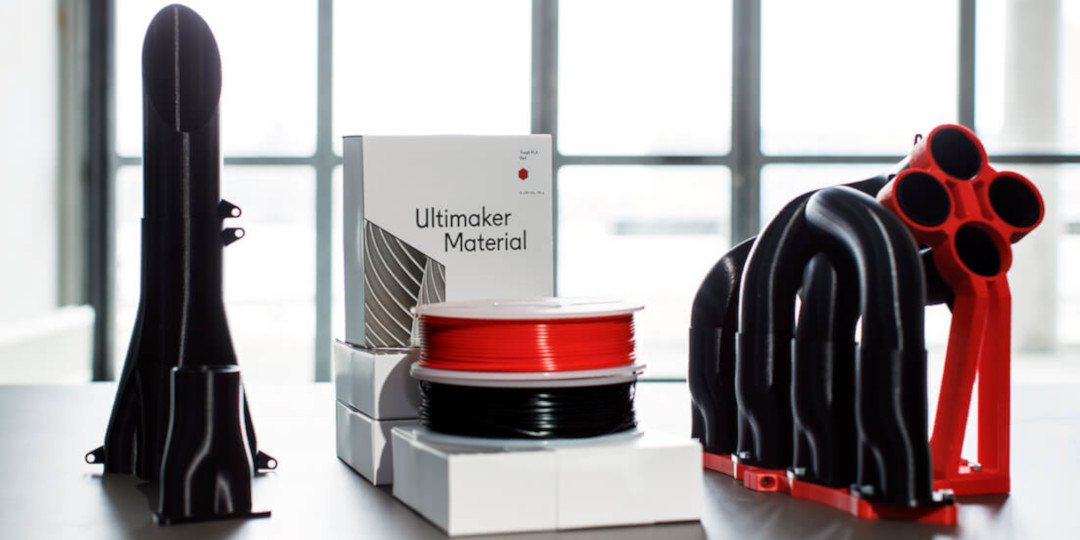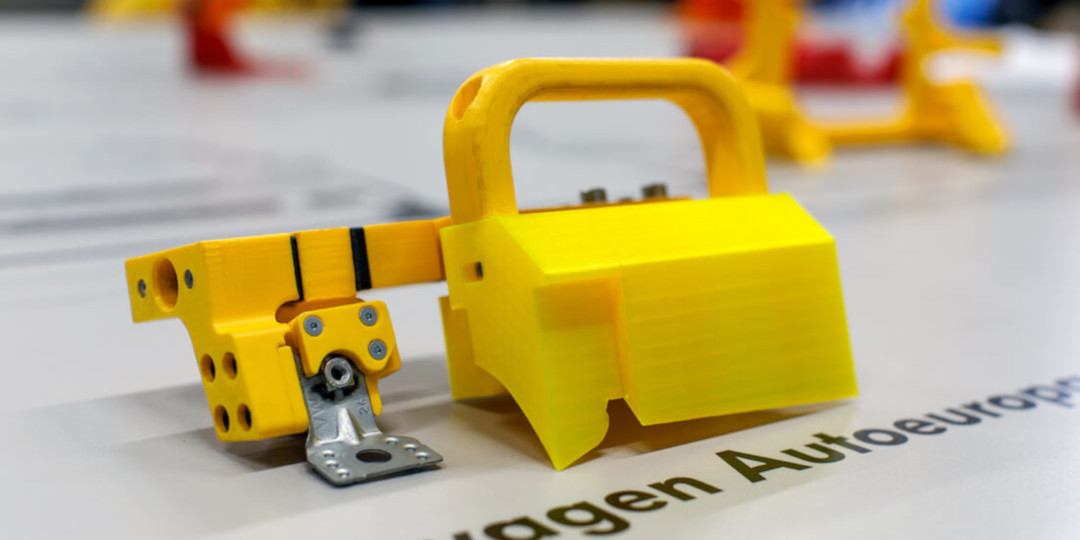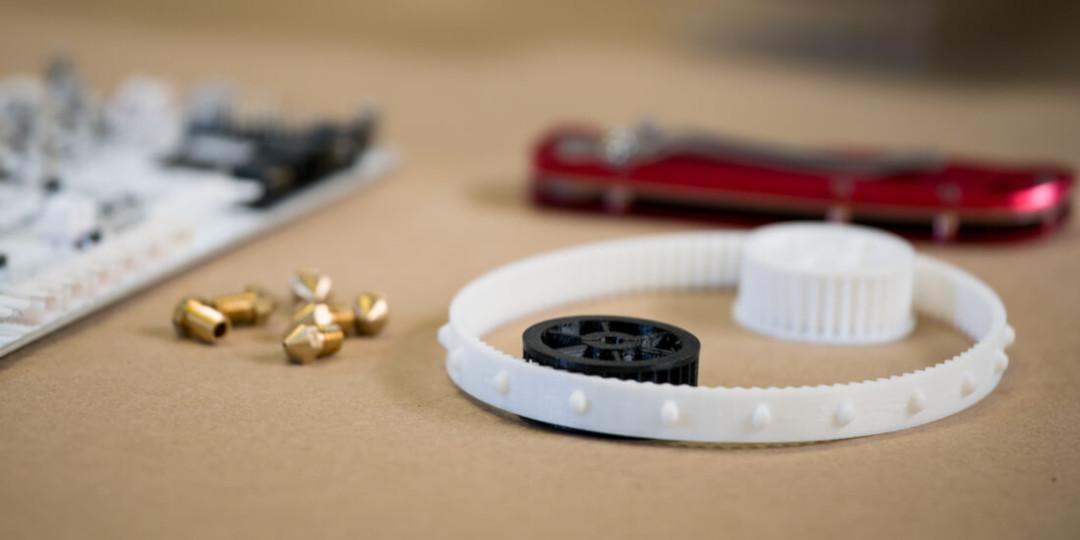When it comes to 3D printing, the filament you use can have a big impact on your final product. Each material has different properties that you can choose to suit your specific needs. Here’s a handy guide to help you figure out which is which.
Things to consider when choosing your material
Deciding on a material requires a bit of thought. What are you designing? Will it be used indoors or outside? Would you like it to be flexible or extra durable? Is it a complex shape that needs additional support to print? These are all questions that can ultimately influence your decision.
For example, printing something to showcase a concept probably won’t require a filament that can take a lot of wear and tear, while a functioning prototype like a tool or spare part might. If your design contains large bridges or overhangs, you’ll need a material than can support this. Looking for something to demonstrate a concept like new packaging? A material that comes in a variety of colors can help your team visualize it better and distinguish prototype versions.
For easy printing
If you’re just getting started or need something that prints quickly and consistently every time, you should start with a filament like PLA (polylactic acid)or Tough PLA. For larger prints, PLA is the most reliable and serve a wide range of applications, such as concept models and functional prototypes. They also print quickly, which is useful if you need a fast turnaround or require multiple iterations.
Tough and durable
Because of its good mechanical properties, ABS (acrylonitrile butadiene styrene)is one of the most popular filaments for prints that require toughness. When it comes to ABS vs PLA, ABS offers other qualities, such as heat resistance up to 85 °C, which can be useful if the print is going to be used in day-to-day operations. When heat resistance is not important, Tough PLA is a good alternative. ABS can also handle a bit of post-print processing, so you can sand and paint it if necessary. Another material that should be explored for its durability is Nylon. With a high strength-weight ratio, anti-corrosion properties and low friction rates, it’s ideal for applications like tooling and end-use parts.
Heat resistant
Being able to withstand high temperatures is a property required by many different applications, such as manufacturing aids, and there are a number of filaments that present this. Although ABS has good heat resistance, it is limited and can be prone to UV sensitivity. If a print is going to be exposed to sunlight and temperatures higher than 85 °C, you might want to consider something like PC (polycarbonate), which is heat resistant up to 110 °C. The CPE (co-polyester)family is another group of filaments with a good heat resistance (up to 70 °C for CPE and 100 °C for CPE+), and has the added benefit of chemical resistance.
Visual appeal
For 3D prints that hold high visual appeal, something with an extensive range of colors gives you plenty of choice. PLA has a broad spectrum of colors and can print the intricate details needed in functional prototypes. Another useful material for this is CPE, which offers translucency as a property – this is especially relevant for items that will be used in lighting applications. It also has the capability to print detailed surfaces with a high-quality finish. PP (polypropylene) is also translucent and, as one of the most widely used plastics in the world, is the go-to material for many product development applications.
Strong, but flexible
PP is also a semi-flexible material and, with a high fatigue resistance, is exceptionally useful in creating things like living hinges, especially those on bottles. Over time, continuous use can weaken a material, but PP retains its structural quality. However, if you require something that has the same strength and flexibility as rubber, an alternative is TPU 95A. With a Shore-A hardness of 95 and up to 580 ° elongation at break, it’s versatile enough to suit most short-run manufacturing needs, as well creating tools and guides to help you in your business.
Complex prints
3D printing is beneficial in that it allows you to push the boundaries of design and come up with alternative solutions. Intricate geometries may be easily created using CAD software, but the reality is that printing can be limited. This is where support materials can play a huge role. PVA is a water-soluble material to support large overhangs and deep cavities. Printed using dual extrusion, it dissolves easily in water, leaving you with a finished print that is smooth and precise. It works best for delicate prints that cannot withstand a lot of post-print processing. For a print that’s more durable, another option is Breakaway. It prints faster than PVA and can be easily removed using a set of pliers. It is specifically designed give you more freedom and a high-quality finish on your print.
All our materials have been optimized to work on Ultimaker 3D printers, with preloaded profiles to help anyone get the best print possible, first time and every time. Ultimaker printers also have an open filament system, which means users can experiment and discover whatever material suits them best, giving you the confidence and freedom to best suit your application.

















